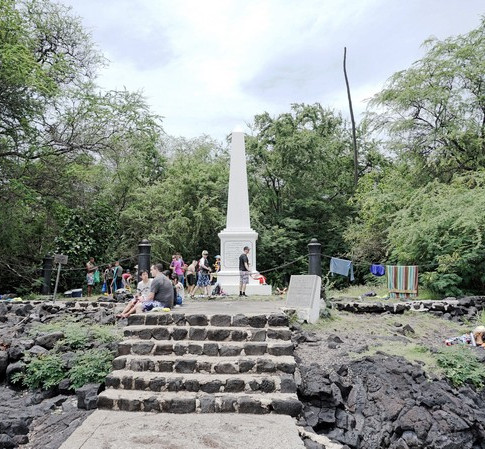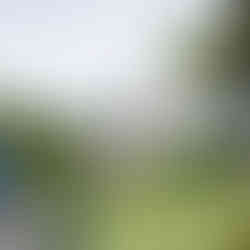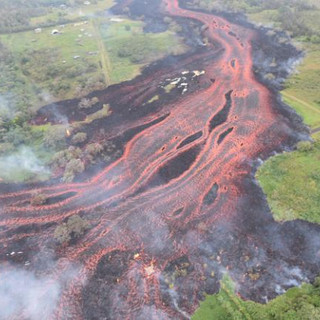HAWAII: BIG ISLAND BEAUTIES FROM HEAVEN TO EARTH
- renataondok
- May 28, 2018
- 10 min read
As explained in our first update from Hawaii,the islands of Hawaii were created due to a volcanic hotspot where lava erupts from the core of the Earth under the ocean. As the tectonic plates gradually drift away over the course of millions of years, a series of volcanoes are formed that become living islands over time. The old volcanoes stop growing and start eroding, while new ones rise in their place. The newest and largest island is called Hawaii Island, which name is quite confusing as people mix it up with Hawaii the state (of which the island is not the capital), so a lot of times people just call it the "Big Island", because it is the largest of them. It has such a wide variety of nature and sights that you can easily spend here an entire week or more! Here are our top 7 highlights:
1. Mauna Kea Observatory - The Heaven
Mauna Kea is a 4200m high dormant volcano, which is huge when you consider that you can easily drive around the Big Island in a day, so basically the whole island is mostly this one mountain. In fact, if you include the parts below the sea level as well, then it rises over 10,000m from the seabed, making it the largest mountain on Earth! This explains how it often snows on its peak, where you can even ski! But let's stop here for a second - did you know it can actually snow in Hawaii?! We're talking about a spot that has tropical beaches with turtles within an hour's drive! Insane...
Such a huge mountain taking up the middle of the island has a big impact on the climate as well: the windward side of the island gets practically non-stop rain, while the leeward side even has a small desert, and there is every climate zone in between. As a matter of fact, 11 of the world's 13 climate zones can be found on the Big Island!
The reason Mauna Kea is famous among astronomers is that it is so high, that the summit is above the clouds most of the time without any light pollution from big cities around, so it's perfect for stargazing. Actually many countries built their high-tech observatories on the summit. On the other hand, the mountain is a sacred place for Hawaiians, so there is some controversy whenever the idea of building additional observatories is raised, and it is hard to balance the needs to the different communities.
Mauna Kea Observatory
Source: Andrew Richard Hara, Hawaii Magazine.com/Discover Hawai Tours.com
The Visitor Center on the mountain has regular activities and special cultural events, where you can learn about stars and much more, so it's recommended to check these out on the Center's page to pick the best date. So we did, and we picked a stargazing tour, with explanation of the cultural history of the location and Hawaiians' relationship with the night sky, however it was unfortunately cancelled due to terrible weather (and so were all the other events during our stay on the island) - apparently 20cm of snow fell that night! So this is a bit of a sore spot for us! Oh, have we mentioned that the weather can be a little unpredictable on the Big Island?
2. Coffee Plantations and Donkey Balls
As we worked our way around the island counterclockwise, the climate changed every 10 minutes, and we stopped at a Kona coffee farm to sample the many varieties of coffee in this prime coffee-growing area. The coffee here has been cultivated here since the 1800's on the side of the volcano where the elevation creates a special micro-climate. The brand "Kona coffee' can only be used for the produce from this area which makes it one of the most expensive coffees in the world.
Greenwell Farm coffee plantation overlooking the ocean; Avocado trees on the farm
You can choose from a dozen of coffee farms for your visit. We went to Greenwell Farm for a guided tour on the farm, followed by coffee tasting, and it didn't disappoint. It was very interesting to compare how much more high-tech and automated the coffee making technology was here compared to what we had seen in Guatemala and elsewhere around the world. We tasted almost a dozen types of coffee - and even Szilveszter managed to taste a slight difference between them! We also tasted a very interesting juice, Kona Red, made out of the red coffee fruit which has amazing anti-oxidant properties. It tasted nice, but cost and availability will probably be barriers to it spreading more widely!
Greenwell Farm Kona coffee tasting and the Kona Red juice
Even better than the coffee were the "Donkey Balls"! These are pieces of locally grown macadamia nuts coated in chocolate. Donkey ball is, apparently, a well-known word for the concept, which is why the original company producing it wasn't able to trademark the name. In their original shop there are many varieties of balls, e.g. different nuts or dried fruits as the core covered in various types of chocolates (milk, dark, white and even chocolate with coconut sprinkles!). We would absolutely recommend stopping at the Original Donkey Ball Store close to Captain Cook and try some free samples and stock up, but beware of the many copy-cats on the island!
The Donkey Ball store; Donkey ball with macadamia nuts and coffee balls

3. History, snorkeling and black sand beaches
We stopped in the village of Captain Cook, where the Ka'Awaloa Trail, a steep hike through jungle and lava fields leads you down from the road to the Kealakekua Bay where Captain Cook was killed by natives. The hike is doable in an hour or so downhill but it's pretty strenuous uphill, so good shoes and lots of water are definitely must-haves! In the bay a monument commemorates Captain Cook, and it's also a neat snorkeling spot with crystal clear water. Just be prepared for some crowd of day trippers on guided kayaking and boat tours - not everyone is as crazy as we were to attempt such a big descent!
After the invigorating hike, we had a panoramic picnic in the garden of the wooden Painted Church (St Benedict Roman Catholic Church) from 1842 close to Captain Cook; which is also worth a look inside to see its special Hawaiian paintings, especially as it was tastefully decorated on Palm Sunday when we were there!
Once we carried our snorkeling masks and pipes to Hawaii, we had to stop at one of the main snorkeling spots on the island, at Two-Steps, which is a rocky beach with some naturally formed stairs to enter the water for snorkeling. The corals and fish are quite nice, and we even spotted a turtle under water! It was a busy spot at the time of our visit, but luckily the area to snorkel is large enough for many visitors. .
Finally, our last stop of they day was Punalu'u Black Sand Beach on the South corner of the island, where we spotted 3 lazy turtles chilling on the beautiful black sand beach, clearly without a care in the world! You can even swim here - if the weather allows. as this is too close to the larger mountains and you can feel their impact on the weather. Unfortunately 5 minutes after we left the beach, we entered this rainy zone, which meant that from practically one second to the next we couldn't see 5 meters away in the rain. The following few days were about trying to make the best of the weather in the rare moments when it wasn't raining.

4. Mauna Loa Volcano - The Earth
One of the other main attractions on the Big Island is seeing the active Kilauea volcano up close. "Up close" is however a relative term, since the closest areas are off-limits for safety reasons; although there are a few good viewing spots where you can see the fumes and occasionally the red glow at night. If you hike for a full day you can go off an explore and find some fresh lava flows and maybe even an area where the lava reaches the ocean in a big hiss of steam, adding to the size of the island day by day. However, this is very dependent on the temperament of the volcano, and the rangers told us that they hadn't come across any lava flows in the past month - bummer!
The Kilauea Crater
However, a few weeks after our visit, the Kilauea volcano erupted again at another point, close to the city, Pahoa, in a residential area with a huge explosion and earthquakes! The location of the new eruption is actually a 5 minutes' drive away from the place we stayed at, which is scary and amazing at the same time! Funny enough, one day when we drove back from the national park we noticed that a group of people were analyzing some steams coming up from the middle of the concrete road (!) and wondering whether that was related to any volcanic activity?! We joined them and had an awkward laugh together how weird that would be to have lava flowing under our feet! A few weeks later the volcano erupted, and sadly it's a big threat to people with dangerous gas emission and volcanic glass particles in the air...!
Partly due to the constant rain and fog, we chose not to do a longer rim walk this time, but spent a relatively quiet day enjoying the vistas from the various lookouts (in the rare moment when the weather cleared up), warming ourselves in the steam geysers and learning about the volcano from the Visitor Center.
We learned that Pele is revered in Hawaiian mythology as the goddess of fire, lightning, wind and volcanoes, and she's also the creator of the Hawaiian Islands. As such an important influencing power of the island she's well respected across Hawaii. The debris from the volcano, some of which has incredible shapes, is all attributed to her (e.g. Pele's hair, or Pele's tears

There are numerous smaller and larger hikes in the park, the most popular being the Kilauea Iki Trail across volcanic lava hills, and some people dedicate their entire holiday to discover these! Another cool experience is having a look at the underground lava tunnel, which you can walk through for a couple hundred meters in nearly pitch black.
Steaming Geysers at Steam Vents; the Kilauea Iki Trail from above
5. Meditation and Relaxing
Our lodging on the volcano side was the Kirpal Medication Retreat, which we'd booked due to a lack of other options (Hawaii gets very busy in the holiday season!), but we found out it was a really nice place to recharge the batteries away from the world. The facilities are a bit rustic to keep you away from the world (limited electricity, 2 shared showers with a wall open and looking out to the forest, huts with mosquito nets instead of windows and walls), but the back to the basics mentality offers a lot in other areas. There are daily yoga and meditation classes, and they serve delicious vegan food three times a day for very reasonable prices, partly sourced from their own organic garden (there are no restaurants nearby, so be prepared to eat there or bring your own to prepare in the kitchen).
Kirpal Retreat and the way there; Fruits in the garden
If you're in the neighbourhood, we would definitely recommend stocking up in the Islands Natural organic grocery store in Pahoa, where they even serve delicious ready-made meals at affordable prices - be prepared for the concentration of hippies frequenting the store. It seemed to be a very different corner of America, so it would have been interesting to stay for a few more days - although perhaps not to move there forever, as quite a few people had done.
6. Waipi'o Valley - The valley of the kings
Our penultimate stop was visiting the famous Waipi'o valley (meaning "curved water" in Hawaiian), which used to be one of the most fertile and most populated agricultural areas of the island prior to European settlement. In the time since a lot of people have moved to the cities, but there are still a few organisations working to preserve Hawaiian ownership of the land and the connection of the people with the land through agriculture. The road is inaccessible by any car other than a 4WD - it is said to be the steepest public road in the USA -, and even the 4WD we were in was barely managing to inch the valley walls.
We went on a guided horseback ride in the valley, which is one of the few ways you can explore this breathtaking area which is usually off-limits to foreigners. It was a very fun ride through the forest and the tarot plantations, with some small stream crossings thrown in to make it more exciting!
Views of the Waipio Valley

A bit further to the West you can find the quaint village of Waimea, which has a fantastic village market on Saturday mornings set in an old barn which also functions as a paniolo (cowboy) museum - try to go on a day when it is open if you can!
7, Snorkeling with Manta Rays - The activity we had left for last on the Big Island actually turned out to be the highlight of the whole trip: snorkeling with manta rays! Mantas feed on microscopic plankton at night, and since the boats that take snorkelers shine a blue light into the water attracting the plankton, it attracts the mantas as a consequence. Mantas are huge (with a wingspan of 3-4 meters, and can weigh up to 600kg) and not at all dangerous to humans (they have no teeth and filter the seawater through their months to find the microscopic plankton). We were a bit worried about the visibility at night, since we were used to seeing marine wildlife moderately far away when we were diving, but luckily the worry was completely unfounded. The whole experience blew our minds away! The mantas come to you, because the light attracts their food to you - there were 6 mantas playing and majestically swimming around us, literally licking distance away (as the instructor phrased it) for the full 30 minutes, we couldn't stop staring!
Manta rays up close
Safety was great as well, the boat takes you just 100m offshore, and everyone is holding the same big flotation device lying on the water, so you don't even need to swim - as a matter of fact, you're not really allowed to swim, because they don't want you kicking the rays accidentally. There are options to dive instead of snorkel, but, honestly, there is no reason to go diving, since you're actually closer to the animals snorkeling. This is the activity you should in no circumstances miss - it was the highlight of our trip and we had never seen anything like it!
Although we would have been able to spend a few more days to enjoy the sun around Kona, after a 5-day whirlwind tour it was time for us to pack our bags for Kauai, the furthest Hawaiian island from the Big Island. It was waiting for us with a different kind of experience, its much quieter atmosphere and incredible hiking views.





























































